
Conférence, Forums Régionaux du Savoir
Pesticides et santé, quels effets sur notre santé ? avec Xavier Coumoul
Lieu Hôtel de Région de Rouen
Heure -
Publié le – Mis à jour le
Bienvenue aux Forums Régionaux du Savoir, votre fenêtre sur le monde de la science.
Venez explorer, questionner et comprendre le monde scientifique à travers nos conférences mensuelles passionnantes.
Idéal pour les esprits curieux de tous âges, y compris les enseignants et leurs élèves.
Chaque soirée, d'une durée de 90 minutes, se compose de trois séquences dynamiques :
Ne manquez pas cette opportunité unique d'apprendre directement des experts et de participer à des discussions éclairantes.
Réservez votre place dès maintenant et rejoignez notre communauté de passionnés de science!

Conférence, Forums Régionaux du Savoir
Lieu Hôtel de Région de Rouen
Heure -

Lieu Hôtel de Région de Rouen
Heure -

Lieu Hôtel de Région de Rouen
Heure -

Conférence, Forums Régionaux du Savoir
Lieu Hôtel de Région de Rouen
Heure -

Conférence, Forums Régionaux du Savoir
Lieu Hôtel de Région de Rouen
Heure -

Conférence, Forums Régionaux du Savoir
Lieu Hôtel de Région de Rouen
Heure -

Vidéo: Publié le
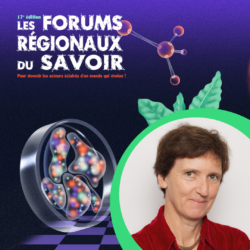
Vidéo: Publié le
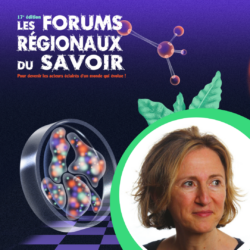
Vidéo: Publié le
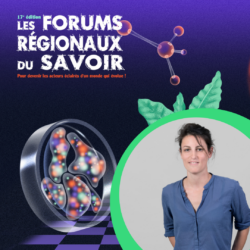
Vidéo: Publié le

Vidéo: Publié le
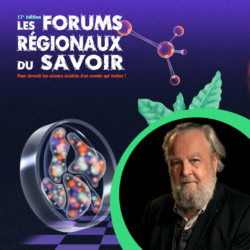
Vidéo: Publié le
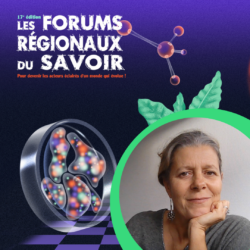
Vidéo: Publié le

Vidéo: Publié le
Le savoir et les savoirs, ne sont riches que de leur partage. Ils recèlent une puissance émancipatrice qui doit être mise à la portée du plus grand nombre.
Car, oui, mieux comprendre le monde qui nous entoure nous aide à gagner en autonomie et en liberté. Les sciences ne sont pas des terres opaques, réservées à quelques-uns. Les chemins de la science doivent être ouverts à toutes et à tous, praticables par toutes et tous. Aussi est-il indispensable d’organiser la rencontre entre le grand public, dans sa diversité, et les scientifiques, dans leurs spécificités. C’est toute l’ambition des Forums Régionaux du savoir, pour cette 18ème édition à nouveau.
La Région Normandie, chef de file en matière de promotion et de diffusion de la culture scientifique, technique et industrielle (CSTI) pour laquelle elle mobilise près de 2 millions d’euros chaque année, porte l’ambition de sensibiliser le public, et en particulier les jeunes, aux enjeux de la science dans notre société tout en faisant de la CSTI un levier en faveur de l’égalité femmes-hommes qui permette de rapprocher l’ensemble des normands de la culture des sciences. La Région est donc très heureuse de pouvoir contribuer une nouvelle fois à la réalisation des Forums Régionaux du Savoir et des moments précieux qu’ils nous permettent de partager.
En 2024, de belles nouveautés vous attendent sur des thématiques essentielles à l’évolution de nos sociétés. Je pense notamment à la physique quantique, l’importance des mathématiques, les défis de l’intelligence artificielle, la santé dans toutes ses dimensions, ou encore la ressource en eau et la protection des océans, qui constituent des enjeux majeurs de notre société face auxquels la Région Normandie est pleinement mobilisée dans le cadre des politiques qu’elle développe au quotidien.
Alors, prenez dès maintenant connaissance du riche programme détaillé dans cette plaquette, notez bien ces dates dans votre agenda, parlez-en autour de vous et rendez-vous chaque mois à l’Hôtel de Région de Rouen pour aborder la pertinence de la science dans notre société.
C’est par la coorganisation de la Fête de la Science, la réalisation d’expositions à l’Atrium et la programmation des Forums du Savoir que Science Action Normandie, association labellisée par le Ministère de l’Enseignement supérieur et de la Recherche et soutenue par la Région Normandie, contribue à la diffusion de la culture scientifique, technique et industrielle.
Dans une région riche en compétences académiques et au tissu industriel diversifié, il est en effet primordial de faire connaître ce potentiel en particulier auprès des plus jeunes. Il est inquiétant de constater le désintérêt croissant de notre jeunesse pour les disciplines scientifiques. Une étude récente de l’IFOP sur la mésinformation des jeunes à la science à l’heure des réseaux sociaux a montré que plus de la moitié des 18-24 ans trouve que la science apporte autant ou plus de mal que de bien, la proportion jugeant que son apport à l’humanité est plus nocif que positif ayant triplé sur les quatre dernières décennies. Alors que la première source d’information des jeunes passe par ces réseaux, il devient urgent d’aiguiser leur sens critique pour éviter qu’ils ne se tournent vers ce que l’on nomme les pseudo-sciences. Cette désaffection pour les carrières scientifiques se traduit déjà par la difficulté que connaissent certaines filières pour recruter des étudiants.
Les Forums du Savoir, dont ce sera la 18ème édition, permettent la rencontre avec des spécialistes de diverses disciplines. Le format choisi pour les conférences réserve une large place aux échanges avec le public pour éclairer les points restés obscurs, jeter un regard critique sur les idées reçues et combattre les fausses informations qui circulent. La présence régulière de lycéennes et de lycéens qui n’hésitent pas à participer à ces discussions est devenue une priorité pour Science Action Normandie, de même que la possibilité de suivre en direct ou en différé ces forums ce qui permet de toucher des publics éloignés géographiquement.
Une fois de plus, le Comité scientifique des forums a réussi à mobiliser des chercheuses et chercheurs de haut niveau qui viendront présenter leurs travaux menés souvent en lien étroit avec les préoccupations contemporaines. C’est ainsi que cette année nous aurons le plaisir d’accueillir entre autres, le Professeur Alain Fischer, Président de l’Académie des Sciences, qui nous parlera de thérapie génique, et Mathilde Cannat, chercheuse au CNRS, dont la conférence sur les grands fonds océaniques viendra faire écho à l’exposition « Océan, une plongée insolite en Normandie » qui débutera à l’Atrium en février et se prolongera pendant 18 mois.
Nous vous attendons donc nombreux pour partager avec tous ces passionnés de la recherche, ces moments d’information, de découverte et d’échange.